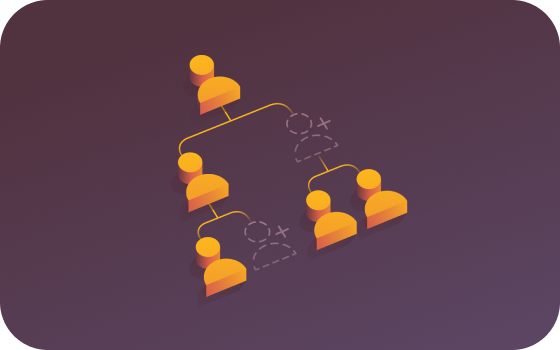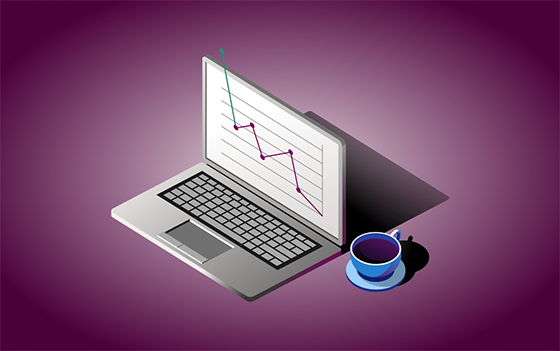10 best accounts payable software for small & large businesses in 2025
In this article
Your accounts payable (AP) process should help your business grow, not hold it back. In 2025, AP software is essential for any organization. These tools allow businesses of all sizes to simplify and optimize accounts payable. Modern solutions reduce manual errors, enhance efficiency, and ensure vendors and partners are paid correctly and on time.
There are numerous software options available that offer an array of options, including leveraging automation for tasks like invoice processing and payment tracking. Sophisticated AP software enables businesses to improve financial management and maintain positive supplier relationships.
This guide will help you find the best AP software for your company’s needs. Our comprehensive overview will provide insights into key features, benefits, and selection criteria to help you choose the right AP automation tool for your business.
What is accounts payable software?
Accounts payable software streamlines and automates managing and paying your business’s outstanding obligations. Instead of manually processing stacks of invoices and payments, AP software digitizes the entire workflow, including invoice processing, approval, and payment. The result? Less busywork and far fewer errors.
With modern AP tools, you can effectively manage your business payments, ensuring prompt and precise transactions. Automation makes quick work of laborious accounting tasks like data entry and document matching, virtually eliminating human error. Your business payments take less time, are more accurate and compliant, and your team can concentrate on strategy and growth, not managing tedious administrative chores.
6 benefits of using AP software solutions
Let's dive deeper into the benefits of AP software and explore how it has revolutionized financial management.
1. Improves cash flow control
AP automation platforms give you real-time visibility into your financial obligations, enabling you to manage your cash flow more effectively. This helps organizations maximize payment schedules, allowing you to take advantage of discounts for early payments and avoid wasteful spending. With a clear view of upcoming costs, you can better allocate resources to meet your obligations. This proactive approach helps your company maintain financial stability.
2. Lowers workforce expenses
Automating your AP process means you’re no longer burdened with manual data entry and other time-consuming tasks, resulting in significant labor and cost savings. Operational resources can be allocated to other important tasks, like vendor management and forward planning, boosting productivity and your bottom line.
3. Reduces mistakes
In addition to lowering operational expenses through automation, AP software significantly reduces mistakes by automatically capturing and validating invoices and other financial data. A consistent and automated AP process virtually eliminates costly errors like duplicate payments, overpayments, and paying fraudulent invoices. If mistakes do happen, modern AP systems make it easy to track and resolve discrepancies by providing a clear audit trail.
4. Helps avoid late payment penalties
When you do accounts payable tasks manually, it’s easy to miss invoices, resulting in late fees. Many AP platforms offer tools like automatic payment scheduling and reminders to help you avoid costly penalties.
5. Enhances vendor relationships
With AP software solutions, many payments are made automatically and on time. This reduces disputes and helps cultivate positive relationships with your vendors. When suppliers know they can rely on you for consistent payments, they’re more likely to offer benefits like more favorable terms, special pricing, and priority service. Vendors appreciate timely and accurate payments, leading to a positive relationship that benefits everyone.
6. Increases scalability and flexibility
Most modern accounts payable systems are designed to scale as your business grows. They can easily handle increased transaction activity without a corresponding increase in your team or other resources. You can adjust quickly to changes, whether expanding into new markets or managing seasonal variations. AP automation adapts to these changes efficiently, without adding extra pressure on your current systems and procedures.
10 best accounts payable (AP) software automation companies
1. Rippling Spend
Rippling Spend unifies all company spend — from corporate cards to bill payments and expenses — in a single, integrated system. Plus, unlike other solutions, Rippling Spend connects directly to your company’s financial data and ERP system to manage corporate cards, reimbursements, and vendor payments automatically. Rippling Spend also features AI-powered OCR (optical character recognition) for automatic invoice capture and bill creation, a customizable policy engine for automated approval routing based on spend levels and employee attributes, and a vendor portal for self-service profile and payment detail management.
Pros:
Spend visibility across bills, expenses, payroll, and corporate cards
Detect and prevent duplicate payments through intelligent matching
Sync data automatically with major accounting platforms
Analyze spend with granular insights
Cons:
Complex onboarding for some users
Learning curve for some features
2. Tipalti
Tipalti is an end-to-end AP platform focused on automating the entire invoice-to-pay process. Tipalti offers invoice capture, cross-border vendor management, global payment processing, and tax compliance features.
Pros:
OCR-based invoice data extraction
Automated PO matching and exception handling
Good payment controls and security
Cons:
Lack of detail in error reports
Limited reporting and customization options
Complex implementation process
3. QuickBooks
QuickBooks Online is accounting software that includes integrated AP capabilities for small to medium-sized businesses. It offers features like automated reconciliation, automated payment reminders, and bank integration.
Pros:
Multi-currency invoicing
Custom invoice templates
Mobile invoice management
Cons:
Limited payment functionality
Difficulty making International payments
Limited reporting and analytics
4. Oracle
Oracle’s AP software is part of Oracle’s broader ERP suite. It offers several important features, including invoice processing, payment generation, and multi-currency support. Oracle provides tools for vendor management and robust reporting and analytics.
Pros:
Automation reduces manual effort and errors
Scalability for large (and global) organizations
Proven reliability from a well-respected brand
Cons:
Steep learning curve
Complexity and difficulty of implementation
Limited reporting and dashboard features
5. FreshBooks
FreshBooks is a billing and accounting platform designed for service-based businesses. It combines invoice management with basic bookkeeping functions. Main features include automated recurring invoices, time tracking to invoice conversion, and client retainer management.
Pros:
Customizable invoice templates
Project milestone billing
Multi-device accessibility
Cons:
Limited accounts payable features
Unsuitability for large businesses
User and client limits based on pricing plan
6. BILL
BILL is a cloud-based payment platform that automates invoice processing and payment workflows for businesses of all sizes. Main features include multiple invoice import options, automated approval routing, and international payment capabilities.
Pros:
Fast payment processing
Good payment security
Simplified reconciliation with accounting software
Cons:
Difficulty with international payments
Limited integration options
Long support response times
7. SAP
SAP’s accounts payable solution is a module in their ERP system. It automates and centralizes accounts payable tasks, including managing vendor invoices and payments. Additionally, SAP streamlines invoicing, payment scheduling, and bank reconciliation.
Pros:
Automated invoice capture
Customizable approval workflows
Reduced processing costs
Cons:
Complex platform and steep learning curve
High cost for smaller organizations
Lack of flexibility
8. NetSuite
NetSuite's accounts payable (AP) module is part of the larger NetSuite platform. It offers users automated invoice processing, real-time AP visibility, and broad financial reporting and spend management features.
Pros:
Comprehensive reporting
Customizable dashboards
Automated payments
Cons:
Costly for small businesses
Lengthy set-up process
Steep learning curve
9. Centime
Centime is a comprehensive solution that optimizes AP processes for small and midsize businesses. The platform automates invoice processing, streamlines payment workflows, and integrates with major general ledger systems.
Pros:
Earn interest on AP float
Integrates with popular accounting software (e.g., Sage Intacct, QuickBooks, Xero)
Offers a free trial
Cons:
Can be costly for smaller businesses
Occasional syncing issues
Learning curve
10. Nanonets
Nanonets is an AI-powered AP solution that can extract data from accounts payable documentation, significantly reducing manual processes. It integrates with popular accounting software and offers global payment options.
Pros:
Offers customizable workflows
Provides robust data security
Supports multi-currency transactions
Cons:
AI training required for accurate data capture
Manual validation sometimes required for accuracy
Complex set-up and configuration required
Key features of accounts payable automation software
Accounts payable software does more than just process invoices. From streamlining workflows to supporting global payments, these are the key features that make AP solutions indispensable:
OCR invoice scanning for data capture: Optical character recognition technology allows the AP software to extract key details like vendor names, dates, invoice numbers, and amounts from paper or digital invoices. This step all but eliminates manual data entry, significantly reduces errors, and speeds up your invoice processing.
Automated invoice processing: With AI-driven automation, invoices are processed effortlessly, including coding, purchase order matching, and approval routing. This dramatically reduces the invoice lifecycle while maintaining accuracy.
Streamlined approval workflows: Automated AP workflows forward invoices to the correct managers and approvers based on predefined rules. Automated routing eliminates delays, maintains internal and external compliance, and expedites payment approvals.
Global cross-border payment support: AP software solutions easily handle multi-currency transactions and international payments. Top AP platforms integrate real-time exchange rates and automatically adhere to global regulations, which are essential for organizations operating internationally.
Accounts payable document management: Centralized document storage ensures all your invoices, approvals, and records of payment are safely and securely stored. Keeping your financial documentation in a unified system makes it readily available to authorized parties for auditing, analyzing, and reporting.
Tax compliance and fraud prevention: AP platforms with built-in compliance tools enable you to adhere to federal, state, and local tax laws and regulations. You’re always ‘audit-ready’ with accurate and well-organized financial records and supporting documentation. Fraud prevention features like vendor verification and automated approval chains reduce the chances of making mistaken, unauthorized, or fraudulent supplier payments.
Integration with existing systems: Many AP automation tools connect seamlessly with enterprise resource planning (ERP) software like NetSuite and QuickBooks, making it easier to track invoices, payments, and financial reporting in real-time.
How to choose the best accounts payable automation software
Selecting the right accounts payable automation software is critical to meeting your specific business needs and adoption within the organization. Consider these factors when making your decision:
1. Integration capabilities
Your AP software should connect seamlessly with your accounting system, ERP, and other financial tools. Looking for modern, full-featured solutions like Rippling that unify payroll, corporate cards, and AP in one system. This eliminates the need for error-prone CSV uploads and manual stitching in Excel. Additional integrations to consider include:
Scalable integrations for multi-entity or multi-system environments
Centralized AP management for organizations with multiple locations
Custom API (application programming interface) support or middleware compatibility for legacy or niche frameworks
2. Security measures & protocols
Security is serious business and serious for your business. Look for options with high-grade encryption and data protection. This is especially important for maintaining compliance with federal and state data privacy regulations and global data legislation like the European Union’s GDPR (General Data Protection Regulation). Critical areas include:
Robust data encryption that protects your sensitive information during transmission and in storage
Role-based permissions and multi-factor authentication to control access
Industry-standard data compliance (e.g., SOC 2, CCPA, and PCI DSS for any applicable credit card usage)
3. Customer satisfaction ratings
Evaluating customer reviews and satisfaction ratings can provide real-world intel on available AP solutions. A good starting point is to look for ratings and reviews that indicate ease of use and reliability. Your research should include different sources of user-generated content, including:
User reviews that provide feedback on usability, reliability, and customer service
Case studies and testimonials from competitors in your industry to gauge fit
Retention rates as a key indicator of strong vendor performance
4. Customer service support
You and your team may experience difficulties implementing and using a new AP system. From installation issues to end-user learning curves, strong customer service is a must. Identify vendors that offer the following:
Round-the-clock support via phone, email, and real-time chat
Onboarding resources, including training videos, webinars, and dedicated client relationship managers
Regular updates to keep your platform aligned with the latest technology and regulatory changes
5. User experience and accessibility
Consider AP software options that receive top ratings and positive reviews for user experience. Look for these key features:
A user-friendly design that reduces training and boosts adoption
A mobile-friendly interface that enables remote approvals and payment process monitoring
A customizable dashboard that provides quick access to important metrics and workflows
Automated accounts payable made easy with Rippling Spend
With Rippling Spend, you get more than AP automation and expense management — much more. Unlike traditional AP solutions, Rippling Spend simplifies accounts payable management by consolidating business expenses into a single, intuitive platform. Rippling’s bill pay software automates invoice processing and expense categorization using AI-powered tools, reducing manual data entry.
Real-time compliance tracking ensures all transactions comply with company policies and regulatory standards while keeping records audit-ready. Expenses and invoices are automatically routed to the correct approvers based on predefined criteria, eliminating bottlenecks and reducing processing times.
Ripping Spend enables your company to schedule future payments using your preferred payment method, including ACH, wires, or checks, while maintaining accurate GL coding and categorization for seamless integration with your accounting system. If you’re operating globally, you can pay vendors and contractors across international borders and in their local currency, ensuring smooth transactions regardless of location.
A centralized dashboard provides real-time visibility into spending, allowing you to track cash flow, control costs, and optimize financial reporting. With Rippling’s spend management software, you can manage all of your company spend — expense reimbursements alongside vendor bills, payroll, and corporate cards — together on one platform. This gives you unprecedented control and visibility over spend. And while it’s part of Rippling’s unified HR, IT, and Spend systems. If you only need spend management, Rippling Spend works standalone while still benefiting from shared data and automation across your business systems.
Best accounts payable software FAQs
What software do accounts payable use?
Accounts payable teams use a variety of software solutions to automate and manage their processes. These tools typically offer features like invoice management and workflow and approval automation. Popular platforms often support multiple payment methods and integrate with accounting systems for efficient payment processing and reconciliation. Your business's needs, preferences, and budget determine the right solution for you.
What is the top AP automation software?
Some of the top AP automation companies include Rippling Spend, Bill.com, SAP Concur, and Tipalti. These platforms offer advanced features such as intelligent invoice capture, automated approval workflows, and spend analytics.
What is the best accounts payable software for large businesses?
Large enterprises need accounts payable software that can handle high volumes of transactions, advanced approval workflows, and integrations with existing financial infrastructure. The best solutions for larger companies and multinationals offer advanced automation, real-time reporting, and fraud prevention tools to improve efficiency and reduce risk. Explore enterprise-grade options that grow with your business, offer global transactions, and provide strong data security and privacy features.
What is the best accounts payable software for small businesses?
Small businesses, startups, and even sole proprietorships benefit most from simple, easy-to-use, and budget-friendly accounts payable software. The best options automate invoice processing, reduce busywork, and optimize cash flow management without requiring an in-house finance team. Modern cloud-based solutions with simple integrations and flexible pricing are perfect for businesses looking to reduce manual errors and boost efficiency.
What's the difference between AP automation and invoice automation?
AP automation and invoice automation are often used interchangeably. Both refer to the use of software to streamline the accounts payable process, from invoice intake and approval workflows to payment. No matter the label, the goal is to minimize manual work and improve financial productivity.
How does AP automation software improve the accounts payable process?
AP automation software simplifies and optimizes the accounts payable process by virtually eliminating manual tasks, reducing errors, and ensuring faster vendor payments. Using OCR, it can automatically extract data from your receipts and invoices, making it easier to pay bills accurately.
Many AP systems integrate easily with accounting platforms or ERPs like Sage Intacct, Xero, and NetSuite, providing real-time tracking and reporting. By automating approvals and payment workflows, organizations can optimize their accounts payable operations, reduce processing costs, and enhance financial control.
Disclaimer
Rippling and its affiliates do not provide tax, accounting, or legal advice. This material has been prepared for informational purposes only, and is not intended to provide or be relied on for tax, accounting, or legal advice. You should consult your own tax, accounting, and legal advisors before engaging in any related activities or transactions.
Hubs
Author

Ben Vroegop
Product GTM Lead - Spend
Ben Vroegop serves as the Product GTM Lead for Rippling Spend. He works across all of the products in Rippling’s spend management suite, including expense management, corporate cards, bill payments, travel, etc. Ben brings 14+ years of experience in strategy, innovation, and venture building. He has a proven track record of launching new products and services, forging strategic partnerships, and leading cross-functional teams. He’s worked across various industries — including DoorDash, P&G, and more — to help companies solve their most complex challenges. Ben holds an MBA from IESE Business School in Barcelona and a bachelor's degree in chemical engineering from the University of Michigan.
Explore more
See Rippling in action
Increase savings, automate busy work, and make better decisions by managing HR, IT, and Finance in one place.


























































































![[Blog - Hero Image] Payroll](http://images.ctfassets.net/k0itp0ir7ty4/ETvyHP3pmEXRExpvQNdWq/004bbf55d4815bf1eb846c8996d67fc0/payroll.jpg)
